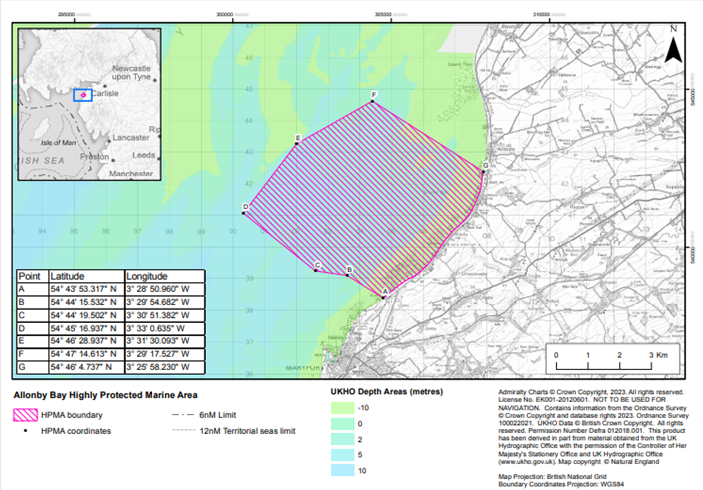Highly Protected Marine Areas (HPMAs)
What is a HPMA?
A HPMA is defined as “ an area of the sea that allows the protection and recovery of marine ecosystems by prohibiting extractive, destructive and depositional uses and allowing only non-damaging levels of other activities”. They are different to other marine protected areas as they aim to protect all species, habitats and associated ecosystem processes within the site boundary, including the seabed and water column. In comparison, many of our current Marine Conservation Zones (MCZs) and European Marine Sites (EMSs) were designated to protect specific features.
It is anticipated that the following activities will be prohibited in HPMAs:
- Recreation and commercial fishing
- Dredging
- Construction
- Anchoring
More information on the process for selecting HPMAs and the reasoning behind them can be found here:
HPMAs within the NWIFCA district
On 28th February 2023, Defra announced that Allonby Bay was one of the three sites to be designated as a HPMA.
It was announced on the 5th July 2023 that these designations had come into effect.
Allonby Bay HPMA
Allonby Bay is an inshore site situated in the Irish Sea, covering the southern region at the mouth of the Solway Firth, extending approximately 5.6km seaward from the shore between Maryport and Mawbray.
It follows the mean high water mark out to a maximum depth of 6.6m, covering 27.6km2.
This HPMA is within both the Allonby Bay Marine Conservation Zone (MCZ) and the Solway Firth Special Protection Area (SPA).

Allonby Bay consists of a mix of habitats, characteristic of an environment that is subject to dramatic currents and tides. The seabed here consists of a range of rocky habitats and sediment dominated habitats, including mudflats, sandbanks, reefs, peat and clay exposures, and biogenic reefs.
The nutrient-rich sediments, dense mussel beds and intertidal rocky habitats in this area attract large densities of shore birds including species such as curlew and oystercatcher. The biodiverse subtidal habitats here provide a food source for fish species, such as flat fish and nursery areas for other species such as bass, cod and herring. In turn, these fish species attract diving, foraging seabirds including guillemots, gannets and razorbills.
The site holds one of the best examples of honeycomb worm reefs in the UK. Honeycomb worms create a complex sediment network of tubes attached to rock, which provides vital habitat for a range of species including crabs and molluscs.
Information on why this site has been designated as a HPMA and further information on the habitats and species associated with the site can be found here: